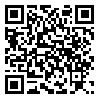BibTeX | RIS | EndNote | Medlars | ProCite | Reference Manager | RefWorks
Send citation to:
URL: http://jdm.tums.ac.ir/article-1-49-en.html
Background and Aims: Since impression materials usually contact with saliva, blood, and oral soft tissues, their microbial contamination are harmful in immunocompromised patients. The aim of the present study was to determine the bacterial and fungal contamination in common impression materials.
Materials and Methods: In current lab trial study, 5 different samples from each 4 impression materials were homogenized in 1 ml Tween 80 and then 100µl of each sample were cultured onto blood agar, EMB, or sabouraud dextrose agar. Bacterial and fungal cultures were incubated at 37º C and 30º C, respectively. The isolated bacterial and fungal colonies were enumerated and identified using specific diagnostic media and tests. Data were analyzed using Kruskal-Wallis test.
Results: Totally 75% of samples had one or several bacterial contaminations. Iranian alginate and Speedex (putty) were the most contaminated samples. On the other hand, Speedex (light body) and foreign alginate showed lower contamination. Species of Micrococcus, Staphylococcus, Bacilluses, Corynebacteria, gram negative Citrobacter, Actinomycetes and Neisseria were isolated from the analyzed impression materials. Aspergillus, Penicillium, Alternaria, Cladosporium and Sepdonium were the fungi isolated from impression materials. Statistical significant difference was shown between bacterial contamination of Iranian and foreign alginates (P=0.001). There was no statistical significant differences between the bacterial and fungal isolated colonies (CFU/gr) of 4 tested impression materials (P=0.21).
Conclusion: Several opportunistic bacteria and fungi were isolated from impression materials especially from Iranian alginate and Speedex putty which indicated their contamination.
Received: 2011/07/4 | Accepted: 2011/11/22 | Published: 2013/09/17
| Rights and Permissions | |
 |
This work is licensed under a Creative Commons Attribution-NonCommercial 4.0 International License. |




